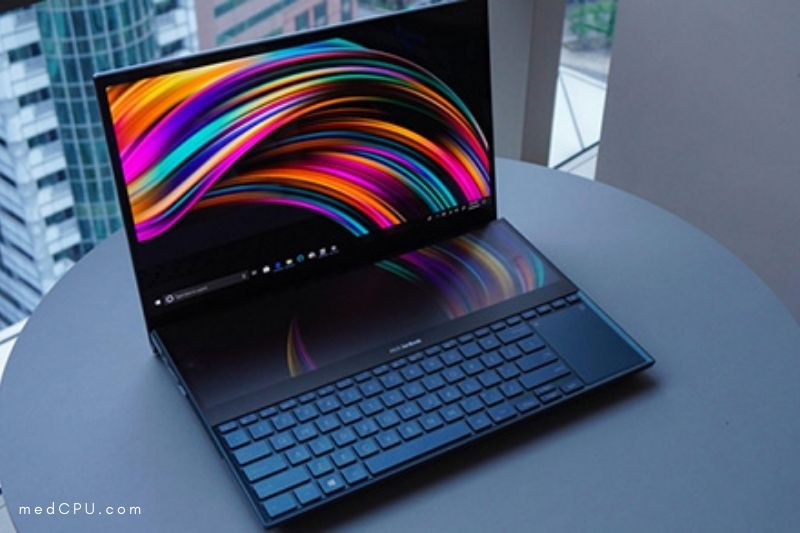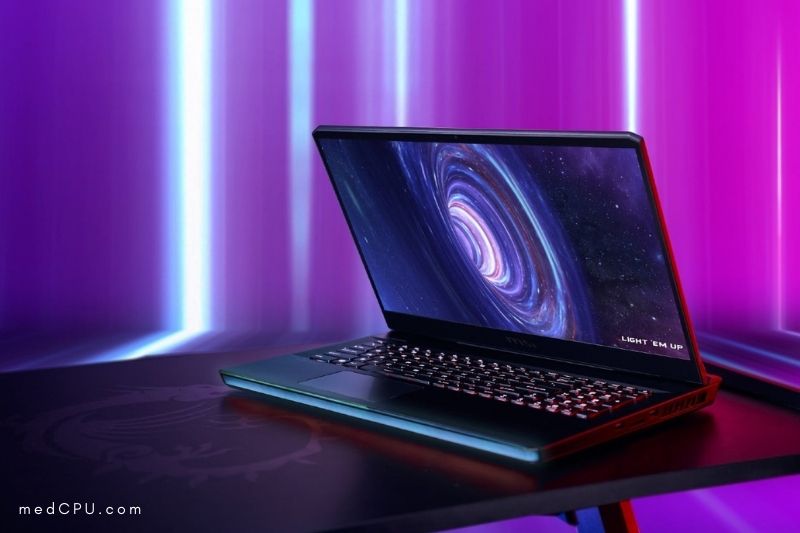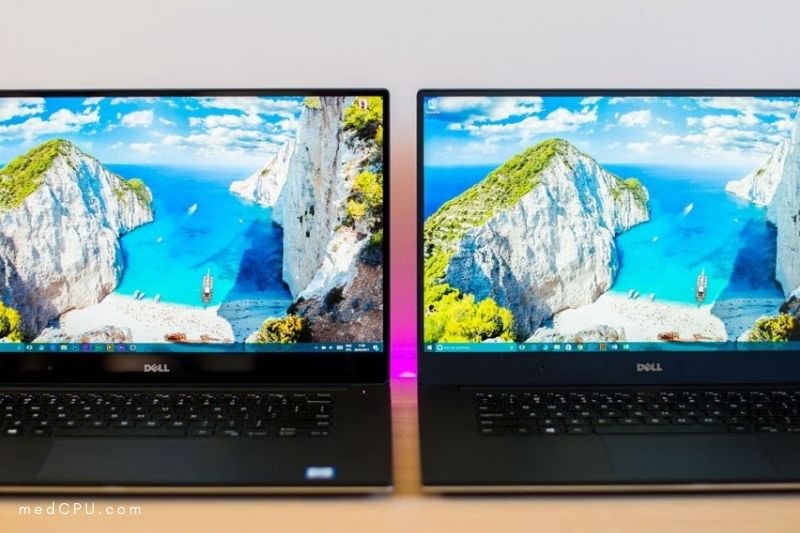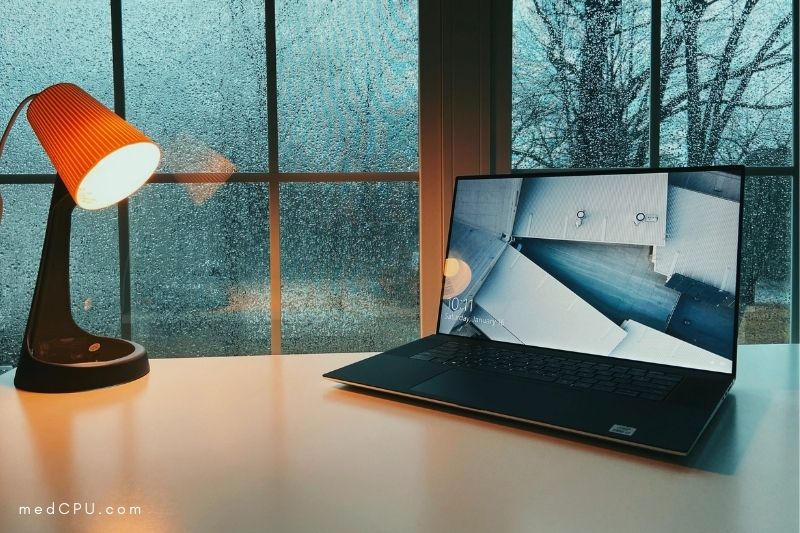The world of technology is fast-paced and evolving, with new products announced every week. New products are often advertised to have higher specs than their predecessors in order to entice consumers to purchase the new product instead of the old one.
A common comparison in the world of consumer electronics is between 4k vs 1080p Laptops. It seems to be a trend for laptops to have 4k resolution.
In the world of technology, you want to be as cutting-edge as possible. However, 1080p resolution is still a solid resolution for work and play. So, the question arises: which resolution should you invest in for your new laptop? Should you get a 4K Laptop?
About 4K UHD Laptops
4K is one of the two highest resolutions. These are 3840×2160 pixels and 4096×2160 pixels. 4K allows for more detailed image quality. 4K can deliver clear images even when the screen size increased. 4K offers unparalleled depth and smooth edges.
Many people love 4K because of the high quality it offers. The 4K laptop has been designed to deliver the best performance and results. 4K image quality is four times better than HD.

4K resolution is used in digital cinemas. 4k is preferred by both the consumer and home theatre landscapes. 4K offers us unbeatable colors. 4K’s saturation and contrast are unbeatable. You can count on your 4K laptop if you are into 4K video editing and photo editing.
These are all the benefits of 4k laptops. Let’s now look at the drawbacks. Because they are expensive, 4K laptops could break your bank. The price of your computer will rise as the number of pixels increases.
4K laptops use a lot of energy, which means you will have to sacrifice battery life. This is a problem with 4K laptops.
Pros of 4K UHD Laptop:
Better Picture Quality
Sharper images and videos will be produced if there are more pixels. By default, 4K displays have excellent color gamut, saturation, and contrast.
It is stunning. Netflix also offers 4K movie streaming.
4K Editing
When you’re into 4K video editing and photo editing, a 4K laptop display is convenient.
Adobe Photoshop and Adobe Premiere make use of the 4K laptop’s pixels. High-resolution laptops are a dream for content creators.
Cons of 4K UHD Laptop:
Expensive
Laptops with 4K displays can be costly and take a huge toll on your bank account or wallet. If you keep all other specifications equal, the difference between a Full HD Dell XPS 13 laptop and a 4K Dell XPS 13 laptop is $300.
Some laptops are similar in price, while others can go up to $500. The laptop will be more expensive if it has more pixels.
More power, less battery life
Because 8 million pixels are on your laptop screen, these pixels will require more energy to keep your laptop alive.
To save battery life, you can downscale the resolution of a 4K laptop’s video to Full HD. It won’t work.
Because the display will have the same amount of pixels, the battery life on 4K laptops is shorter than on 1080p laptops.
>>> See also Dell XPS 13 vs Microsoft Surface Laptop 4 Comparison.
About 1080P Laptops
Laptops with 1080p have a resolution of 1920×1080 pixels. These are also called Full HD. These are the standard resolution for laptops. There is only one fundamental difference between laptops with 4k resolution and those with 1080p. It’s the number of pixels. Although the picture quality isn’t bad, it’s not as great as 4k.
The best thing about laptops 1080p is their long battery life. You don’t have to sacrifice your battery life. Your battery life doesn’t matter. You can continue using your computer throughout the day. A lower number of pixels will help the battery last longer.

The best thing about 1080p display laptops? You can watch movies and photos that are enjoyable and vibrant. This laptop is of excellent quality. You don’t need to have 4K laptops for your daily chores. It’s perfect for everyday use.
The best thing about 1080p laptops is that they are affordable, and you don’t have to blow all your savings to get one. It is affordable. It will offer the same specs as a laptop 1080p, but lower than the 4k laptops.
A 1080p display laptop isn’t the best choice if you are into 4K editing. You cannot scale up the resolution. A 1080p display laptop is another problem. Here, you won’t get the same color accuracy as 4K. Here, the saturation and contrast are ineffective. These laptops at 1080p are not high-quality laptops.
Pros 1080p Laptop:
Better Battery Life
Laptops with 1080p screens must display approximately 2 Million Pixels, which is about 6.22 million pixels less than a 4K screen.
The number of pixels on a laptop is much smaller so it requires less power. This reduces the battery drain and gives your laptop better battery life. You don’t need to charge your laptop as often and your battery will last longer.
Sweet Spot
Many users find that 1080p and Full HD laptop displays are more than enough. This is the ideal balance for nearly everything.
While photos are sharp enough, videos can be enjoyable to view. A 4K monitor is not necessary for everyday tasks.
Much cheaper
Full HD displays cost less than 4K displays. There is a $300 to $500 difference in the price of laptops with a 1080p display or 4K display, provided that they have the exact specifications.
Laptops with 4K displays are not recommended for budget-minded people.
Cons 1080p Laptop:
Color accuracy might not always be the best.
Here is where 1080p displays fall behind 4K displays. However, this does not mean that all 1080p displays are poor at color accuracy. 4K displays are better than 1080p displays in terms of color accuracy, color gamut, saturation, and contrast.
These displays are generally average except for a few laptops. Do your research if you have concerns about the accuracy of color on a laptop with a 1080p display.
Not suitable for 4K editing
The title is enough. You can’t increase the resolution beyond 1920 x 1080. It can’t be scaled to 4K resolution. This makes 1080p laptops unsuitable for 4K video editing, 4K photo editing, or streaming 4K movies via Netflix.
Read also our article about Best Cpu For 1080 Ti in 2024
Difference between The Two 4k UHD vs 1080p Laptops displays
4K Displays can display at a screen resolution of 3840×2160. Although these displays aren’t very common on laptops, they are becoming more popular.
Ultra HD, UHD Display, also known as 4K Display.
1080p displays have a screen resolution of 1920×1080. These displays are most common and often found on laptops.
Full HD Displays also refer to 1080p displays.
What does this screen resolution mean?
The Screen Resolution is the number of pixels displayed vertically or horizontally on a screen or display.
4K UHD displays display a resolution of 3840×2160. This means that each horizontal line of the screen has 3840 Pixels.
Similar to the horizontal lines, each vertical line has 2160 pixels that move from top to bottom.
Full HD 1080p displays have a resolution of 1920×1080. This means that each horizontal line of the screen has 1920 pixels moving from left to right.
Similar to the horizontal lines, each vertical line has 1080 Pixels that move from top to bottom.
How do you calculate the number of Pixels in a Display with a 4K or 1080p resolution?
It’s easy. Multiply the horizontal Pixels by the vertical Pixels.
Total Pixels = (Horizontal Pixels * Vertical Pixels)
A 4K UHD Display is therefore composed of ( 3840 * 2160) = 8,294,400 pixels
A 1080p Full HD HD display can have ( 1920 * 1080) = 2,073,600 Pixels.
A 4K Display has 4x the Pixels of a 1080p display.
A 4K display has more pixels than a 1080p one, so the picture quality and color accuracy of 4K displays will be better than those 1080p displays.
Once you understand the screen resolutions, you can now explore the benefits and drawbacks of each type.

1080p and 4k: Hardware
Displays are the biggest difference between a 4K laptop screen and a 1080p laptop screen. The 4K laptop screen has more pixels, which means a smoother, clearer picture. This can be a huge advantage when you are watching high-resolution movies and videos. The 1080p laptop screen has a lower resolution, which can result in blurred edges and pixelated photos.
While 1080p isn’t bad, 4K is better. 1080p is still an excellent option, especially for smaller laptops.
Apart from the displays, all you would find on a 4K laptop can also be found on a 1080p laptop. The high-end GPUs and multi-core CPUs are all available on a 1080p laptop. This means that aside from the difference in resolution, you aren’t losing out on hardware.
Gaming Performance: 4K vs. 1080p
It is challenging for Gaming on a 4K display because 4K laptops have a very low Screen Refresh Rate, only 60 Hz.
Many games run at high FPS. If your screen refresh rate drops to 4K, you will experience frequent Screen Tearing, Stuttering, and Ghosting. There will be frequent lags during gameplay.
You will need a powerful Graphics card with NVIDIA GSync or AMD FreeSync Technology to play 4K games smoothly.
These technologies ensure that the FPS of the game is equal to or lower than the Screen Refresh rate. This eliminates screen tearing, stuttering, and lags.
A 1080p display is more fun and recommendable because it has a high refresh rate, 120 Hz, 140 Hz, and 240 Hz. High screen refresh rates ensure that your screen is refreshed regularly, which allows you to enjoy high FPS when playing games.
High screen refresh rates on 1080p displays eliminate potential Screen Tearing, Stuttering, and Ghosting.
The screen refresh rate for the Acer Predator Triton 500 is 300 Hz, while the MSI GE65 Raider’s is 240 Hz. These laptops have a 1080p Full HD Display.
Laptops with screen refresh rates above 144 Hz have become quite common. This is not something you’ll find in a laptop with 4K displays.
A laptop with a 1080p FullHD display is best for gamers who want to have lag-free gaming experiences.
If you don’t have a powerful GPU capable of supporting G-Sync technology or Freesync technology, gaming on a 4K laptop will not be worth it.
1080p and 4k: Availability and Pricing
There are thousands of 1080p laptops on the market. You’ll find a lot of 1080p laptops released each year with the most recent hardware. This will allow you to choose one that best suits your needs.
The popularity of 4K resolution has led to a rise in 4K laptops over the past few years. There are hundreds of 4K laptops from different manufacturers. You’re sure to find the one that suits you.
Pricing laptops at 4K and 1080p is a complicated subject. There is a huge difference in the pricing of 4K and 1080p laptops. A 1080p laptop is known to be quite affordable. You can buy a decent laptop for daily tasks for as low as $400.
While a 4K laptop will run you around $1000, a decent laptop for serious work will set you back at least $1000. The cost of a 1080p laptop starts at $1000 and a 4K laptop at $2000.
A 1080p laptop is the best option for those on a tight budget who want the most bang for their buck. If money is not an issue and you desire the best possible experience with crisp and clear visuals, then a 4K laptop might be the right choice.
FAQs about 4k UHD vs 1080p

Does watching 1080p look blurry on 4K?
No. For a 1080p video to look blurry on 4K, the pixels need to be scaled up, which isn’t the case here.
Is there any notable difference between 4K and 1080p Laptops?
There are some differences between 1080p and 4k, but they are negligible. The main difference is that the higher the resolution of the display, the more pixels are available for displaying content.
Should I go for a 4K or Full HD?
4K is the new standard for high-quality TVs. Most 4K TVs are also HDR-enabled, meaning they can display wider ranges of color and offer better contrast than non-HDR TVs.
But 4K is not for everyone and can be too expensive if you don’t need it. For some people, 1080p is enough, and they won’t see any noticeable difference between 4K and 1080P for the purposes of watching TV on their laptops.
Why does the content on my 4K TV not look 4K?
The content on your TV may not be 4K resolution. Not all TVs can play content in 4K resolution. If you’re unsure, check the specifications for your TV.
If you have a 4K TV, the resolution will be listed as Ultra HD (UHD). If your TV only plays the content in 1080p, it will still have a higher resolution than if it was 1080p. You can set your TV to display in the best possible format for your screen.
How do I know if I should buy a 4k or 1080p laptop?
4k screens are very crisp and high quality. If you plan on using your laptop for work, media creation, or gaming then a 4k screen may be worth the investment.
However, if you’re looking for a cheap laptop that you can take with you everywhere, then a 1080p screen will be fine.
Conclusion: Is a 4K Laptop Worth it?
This will come down to your personal needs. If you use your laptop a lot for work or other stuff like this, then a 4k screen will be worth it. If you’re only looking to watch Netflix and Youtube videos in 4K resolution, then you don’t need the extra detail.
4K laptops are worth it for those who want to play games, create media with software like Photoshop or Premiere, or perform some intensive workloads. If you’re looking for a cheap laptop that you can take with you everywhere, then a 1080p screen will be fine.
MedCPU hopes you found this article helpful. We’d love to hear your thoughts and feedback in the comments section below. If you’ve got any other questions about 4k vs 1080p screens or laptops in general, feel free to ask us!

Eyal Ephrat serves as the co-founder and CEO of medCPU.com, where technology is making significant strides in the field of medicine. Through his experience in purchasing PC and laptop equipment and various other tech products, Eyal Ephrat contributes valuable insights to medCPU’s mission.
